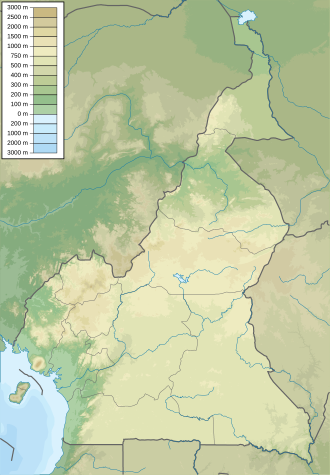Archaeological deposits
At Shum Laka, over 1,000 ceramic sherds, nearly 500,000 pieces of lithic materials, and 18 human skeletons were recovered. [2] Radiocarbon dating of the bone and plant remains recovered demonstrated multiple occupations spanning from 30,000 BP to around 400 BP. [2] [5] Bone preservation from the early occupations is poor, with only a few surviving faunal remains and no bone tools. [1] Later occupations depict common exploitation of medium-sized fauna from the forest. [7] These remains include those from several gorillas and chimpanzees, and various artiodactyla. [7] Based upon the small amounts of materials found in individual strata, it is proposed that the site was occupied for numerous short periods of time. [2] Macrobotanical remains recovered were originally claimed to include both savanna grasses and forest trees, but the source wrongly cited a montane forest herb, Hypericum, as a savanna grass. [2] These were interpreted as meaning that for a period of occupation during the Holocene, Shum Laka was located within an ecotone. [2] Ceramic assemblages recovered from the site date from 7000 BP onward and are indicative of continued longer occupation by semi-agricultural populations. [2] Additionally, these ceramic assemblages indicate the use of the rockshelter by different groups of peoples and that these people interacted with various western African states. [2]
